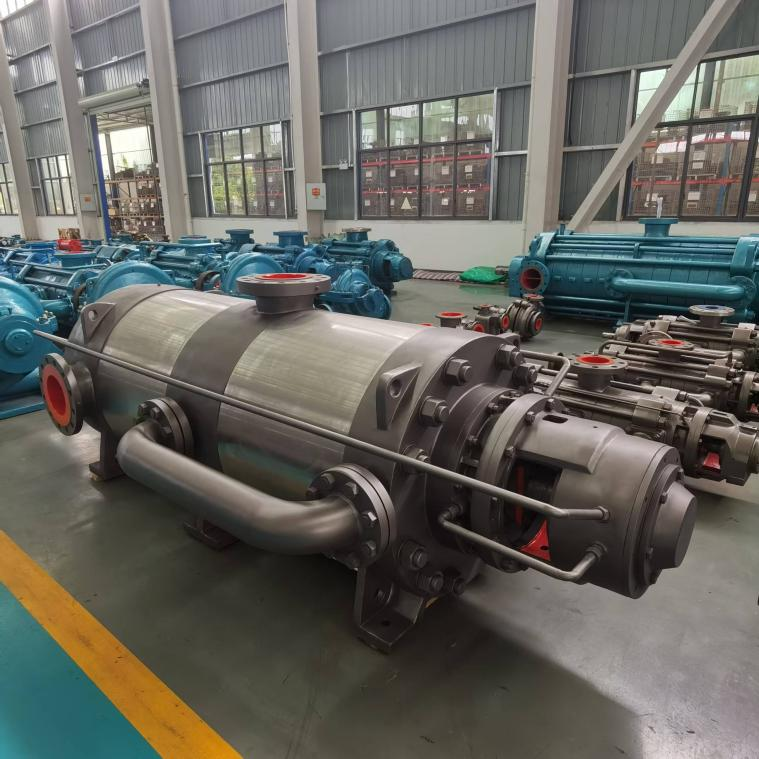Understanding Submersible Slurry Pumps: Essential Insights for Industrial Applications
Oct 06,2025

Submersible slurry pumps are specialized pumps designed to handle the transportation of slurries—mixtures of liquid and solid materials. These pumps are submerged in the fluid they are pumping, making them highly efficient in various industrial applications, from mining and construction to wastewater treatment. Their unique design allows them to manage heavy, viscous materials that traditional pumps might struggle to handle.
One of the primary advantages of submersible slurry pumps is their ability to operate in challenging conditions. The pump's motor is sealed and protected from the slurry, allowing for prolonged use in harsh environments. This feature helps prevent wear and tear, significantly extending the pump's lifespan. Additionally, submersible pumps can be installed at varying depths, making them ideal for applications where space is limited or where the slurry needs to be pumped from deep pits or tanks.
The design of a submersible slurry pump typically includes a robust impeller and casing that can withstand erosive materials, such as gravel, sand, and silt. These components are constructed from materials that resist abrasion, ensuring that the pump can handle solid particles without succumbing to damage. This durability is crucial in industries where the composition of the slurry can change frequently, requiring a pump that can adapt without compromising performance.
In terms of efficiency, submersible slurry pumps are generally more energy-efficient than their above-ground counterparts, primarily because they do not require long suction lines. This design reduces the risk of cavitation and pressure loss, allowing for smoother operation. Furthermore, many modern submersible pumps come equipped with advanced control systems that optimize energy consumption and enhance operational efficiency.
When selecting a submersible slurry pump, it's essential to consider factors such as the viscosity of the slurry, the size of the solid particles, and the required flow rate. Understanding these parameters will help ensure that you choose a pump that meets your specific needs. It's also advisable to think about the pump's installation and maintenance requirements, as ease of access can significantly impact long-term operational efficiency.
In conclusion, submersible slurry pumps are invaluable in industries that require the transportation of heavy and abrasive materials. Their design and functionality make them suitable for a wide range of applications, providing durability, efficiency, and adaptability. By understanding the key features and benefits of these pumps, professionals can make better-informed decisions to enhance their operations and optimize performance in challenging environments.
One of the primary advantages of submersible slurry pumps is their ability to operate in challenging conditions. The pump's motor is sealed and protected from the slurry, allowing for prolonged use in harsh environments. This feature helps prevent wear and tear, significantly extending the pump's lifespan. Additionally, submersible pumps can be installed at varying depths, making them ideal for applications where space is limited or where the slurry needs to be pumped from deep pits or tanks.
The design of a submersible slurry pump typically includes a robust impeller and casing that can withstand erosive materials, such as gravel, sand, and silt. These components are constructed from materials that resist abrasion, ensuring that the pump can handle solid particles without succumbing to damage. This durability is crucial in industries where the composition of the slurry can change frequently, requiring a pump that can adapt without compromising performance.
In terms of efficiency, submersible slurry pumps are generally more energy-efficient than their above-ground counterparts, primarily because they do not require long suction lines. This design reduces the risk of cavitation and pressure loss, allowing for smoother operation. Furthermore, many modern submersible pumps come equipped with advanced control systems that optimize energy consumption and enhance operational efficiency.
When selecting a submersible slurry pump, it's essential to consider factors such as the viscosity of the slurry, the size of the solid particles, and the required flow rate. Understanding these parameters will help ensure that you choose a pump that meets your specific needs. It's also advisable to think about the pump's installation and maintenance requirements, as ease of access can significantly impact long-term operational efficiency.
In conclusion, submersible slurry pumps are invaluable in industries that require the transportation of heavy and abrasive materials. Their design and functionality make them suitable for a wide range of applications, providing durability, efficiency, and adaptability. By understanding the key features and benefits of these pumps, professionals can make better-informed decisions to enhance their operations and optimize performance in challenging environments.
PREVIOUS:
Contact Us
E-mail :
liu@cnpumpmade.com
WhatsApp:
+8615028256698
Address:
Nanyang Industrial Park, Shifo Town, Anguo City, Hebei Province, China








